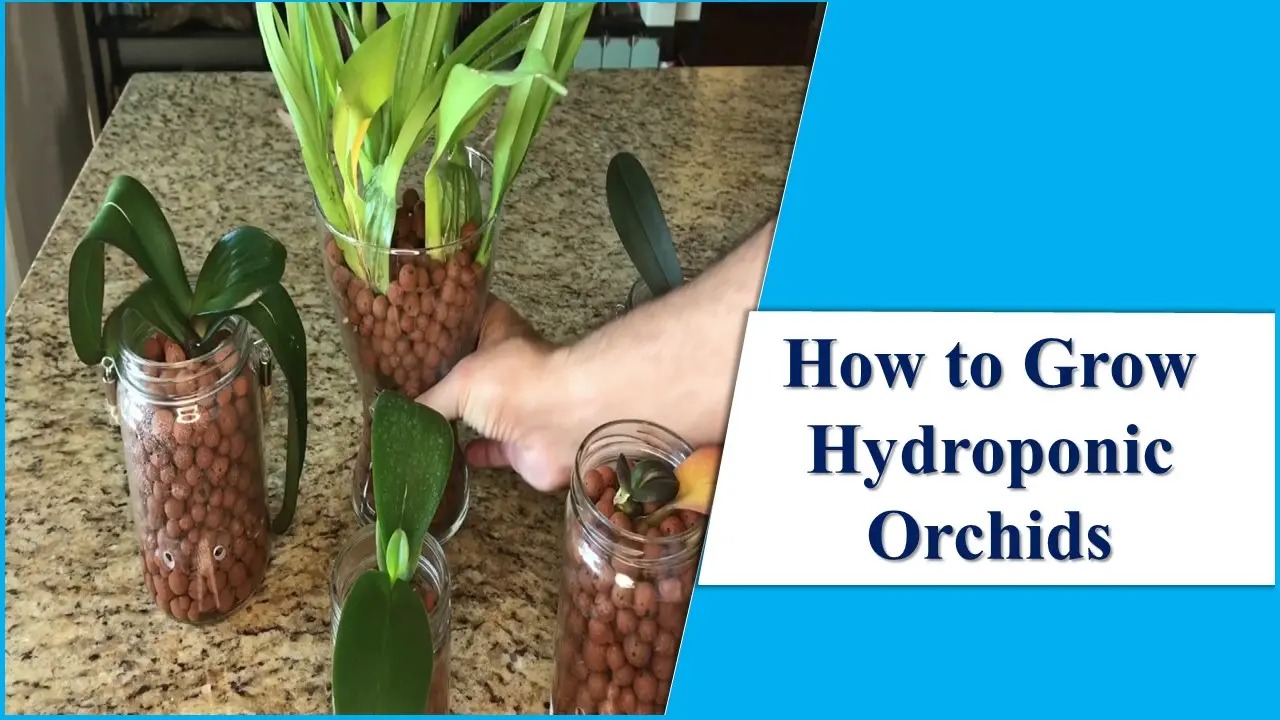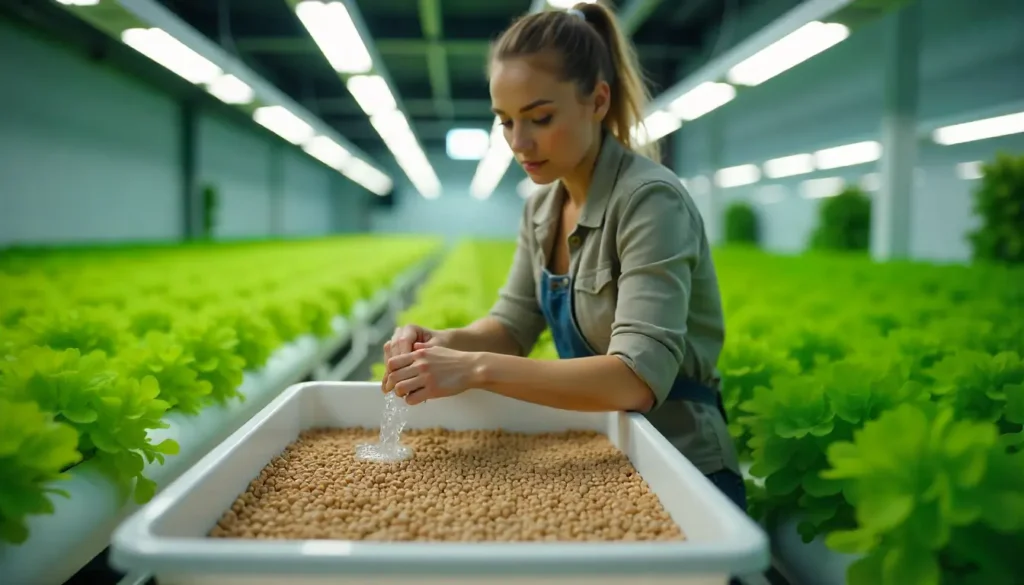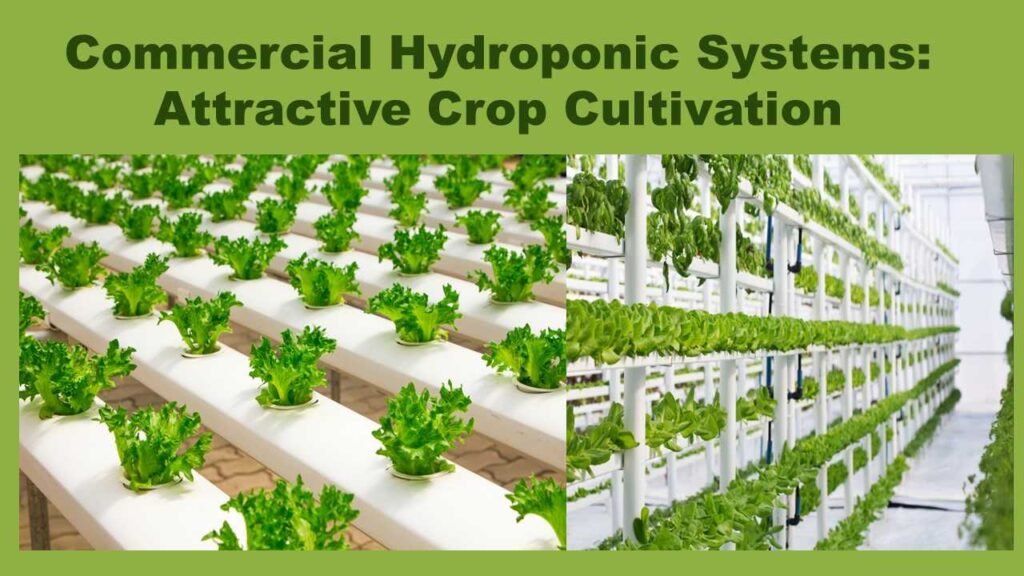How to Grow Hydroponic Orchids: A Perfect Display Piece
These plants, which are sometimes referred to as hydroponic orchids or water culture orchids, are relatively simple for even a beginner gardener to take care after. All they need for this easy method is a suitable container, water, cleaned instruments, and a little patience.
It can be hard to achieve perfect orchid care at home when growing hydroponic orchids. It may prove difficult for beginner orchid gardeners to maintain the aerial orchid roots and bring flowers to bloom. Yet if done properly, growing hydroponic orchids in water can help sick plants recover.
It’s not widely recognized that orchids typically grow hydroponically in many parts of the world!
How is that possible at all? Orchids usually grow between rocks or bark from trees in tropical areas. They receive an abundance of water due to the climate’s tremendous moisture and precipitation, and when it’s not raining, their roots are getting the oxygen they require to exist. They also get the nutrients needed from the decomposing organic waste where they build their roots. On the contrary, hydroponic orchids require some growing media to fulfill their nutritional needs.
This indicates why hydroponic orchids are grown quite differently from most other flowers. Let’s explore a way you might begin hydroponically growing orchids. It is not as challenging as you may believe. The following article gives you all an update on how to grow hydroponic orchids.
The Positive Effects Of Water Orchid Cultivation: How to Grow Hydroponic Orchids
Since every kind of hydroponic orchids has its particular growing requirements, most can be properly grown in an adequate bark-based orchid planting medium. Yet too much water or infections in the potting mix may result in a decrease in health and common orchid issues like spots on leaves and root rot. Sphagnum moss may have been used for covering the roots of orchids received from a nursery. This may contain diseases and is successful at keeping the roots moist but detrimental in getting them dry.
Hydroponics orchids aren’t always kept submerged in water. In general, they alternate between moist and dry; for instance, soaking in water for two days and drying out for five days. This method roots to breathe and more closely matches what the plant would come across in the wild.
Many species of orchids are epiphytic in nature, meaning they develop easily on the exterior of other plants, particularly trees. The air, surrounding water, and litter provide them with a lot of the moisture and nutrients they require. This shows that, for the most section, the amount of moisture is consistent but never excessively high or too little.
How to Grow Hydroponic Orchids
To know the answer of how to grow hydroponic orchids, the beginner must follow the following steps for a good harvest:
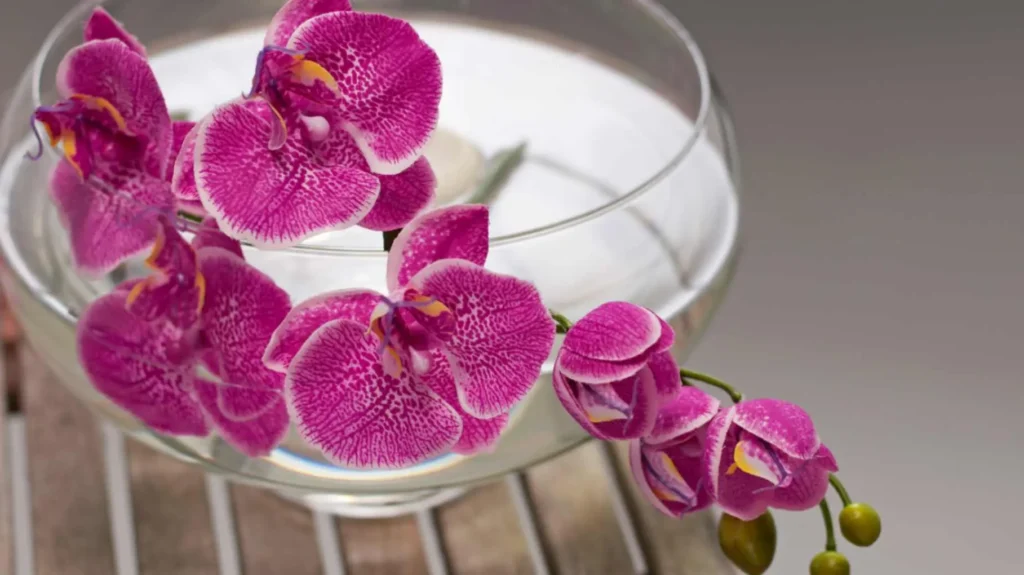
Select the Suitable Hydroponic System-
For hydroponic orchids, the Kratky method or a wicking system will be the simplest method to develop these beautiful blooms. Cultivating orchids in multi-plant systems is not an intelligent choice because you are likely growing a wide variety of orchid species, each of which has different requirements for fertilizers and conditions for growth.
Suitable Growing Media for Hydroponic Orchids-
Even though plants grown in water do not need soil, there are still ample nutrients that can be used by our plants to thrive.
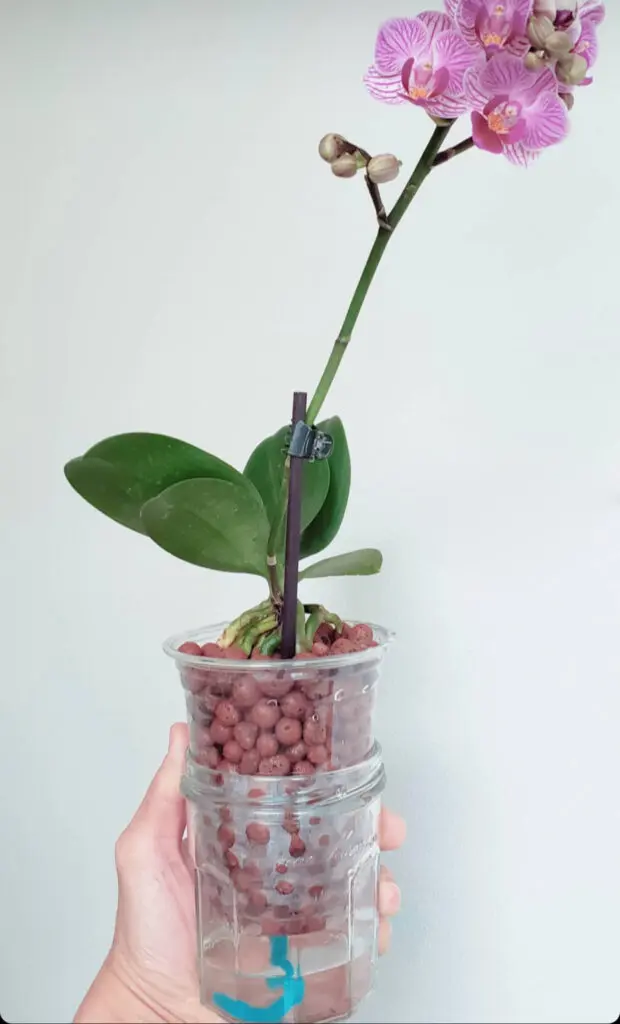
Coco Coir
Growers utilize a variety of hydroponic media in most hydroponic orchids systems to nurture plant roots and keep a healthy water-to-oxygen ratio.
The application of coco coir in hydroponic gardening is rapidly growing in favor. It is made up of crushed coconut husks and is an important evolution in hydroponic growing media case of orchids plants.
Expanded Clay Pellets
Hydroton-expanded clay pellets are arguably one of the most widely used media in the past for hydroponic orchids. These are generated, as their name suggests, by pumping clay into spherical, porous balls. Their neutral pH and almost no nutrient loss into the water column are among their best features.
For many reasons, expanded clay pellets are the most widely used choice. They can efficiently retain water due to their porous nature and are also uniform. In addition, you may get them in different sizes according to the size of your orchids. Unlike other mediums, you can them again in your garden because they expand into clay.
Usually, perlite and vermiculite are mixed with bark or peat, amongst other media. Since they are so light, they need something more substantial and water-retaining to supply your orchid roots with something to hold on to. Each of these is a good option if you are cultivating thinner-rooted orchids.
Lighting Requirements-

Similar to any other hydroponic garden, the objective is to recreate and, if feasible, improve the normal development environment for a plant. You have to replicate the natural conditions of airflow, water, light, nutrients, and humidity for orchids. Let’s talk about light exposure first.
A 400w high-pressure sodium or metal halide bulb will suffice for the vast majority of hydroponic orchids. Simply shift the species you are using further out from the lamp’s center if it needs gentler lighting.
For the vegetative development phase, choose to grow lights that provide ample blue light output as the plants commence to flower, switch to a brighter light bulb.
You may shade your orchids from the light once they have bloomed and exhibit them anywhere in your home.
Orchid Water Culture: A Brief of How to Grow Hydroponic Orchids
Putting it in simple terms, this requires cultivating orchids in more water with three primary techniques: full water culture, semi-water culture, and semi-hydroponics.
Fully Aquaculture for Orchids
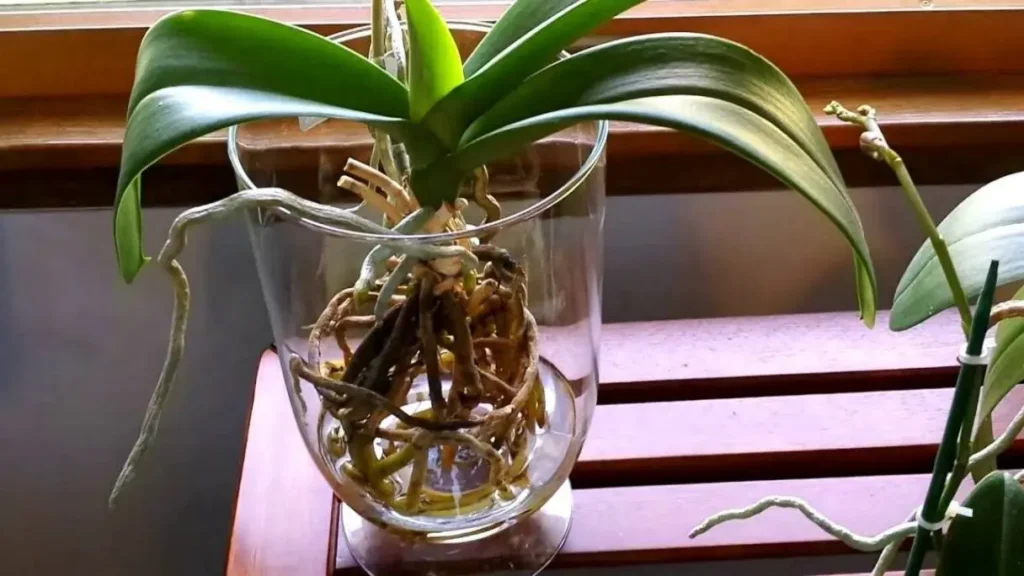
Since most of the time the roots are not completely submerged in water, the word “full” is a little fictitious. While some people submerge them completely, the majority merely submerge half or even one-third of the roots. The above method works best when a portion of the root is submerged in water at all times. Utilizing this method to start a fresh orchid, it is usual to have the origins sit above the water and permit the plant to grow into the water. To answer how to grow hydroponic orchids one should know about the full water culture, semi-water culture, and semi-hydroponic culture of raising orchids that are given as:
How to Fertilize Orchids in Full Water Culture
Especially compared with other ways in this article, you must use extremely diluted fertilizer when nourishing an orchid in full water culture. To convey to the orchid that it is prepared to begin absorbing, water it with a small flow of water after the two-day drying-out period. This will boost the humidity around the roots.
At this stage, the roots will be whitish or light gray, and you can apply fertilized water as soon as you splash or spray them with the first jet of water. Following letting the fertilized water sit in the pot for a few hours—never longer than a day—replace it with pure water from reverse osmosis, rainwater, or the usual water source.
Semi-aqueous Orchid Culture
Under this method, the roots remain immersed in water for a few days before the water is withdrawn to allow the roots to dry out. Grower may pick any combination that works best for him, such as 5 days wet and 2 days dry, or a standard cycle of 2 days damp and 5 days dry.
Nutritional Requirements for Semi-aqueous Culture
Tiny Phalaenopsis in partially water environment: Water levels in semi-water culture will be higher, but they will remain in the vase for a shorter amount of time. So, the grower is going to immerse the flower in water that covers the top of the roots for a couple of days in a row, taking care not to touch the stem.
While using semi-water culture (SWC), the fluid level fills the vase, supplying the roots with enough water, yet they are left in a dry vase for the next five days.
In Semi Water Culture, evaporation is absent, thus the orchids only get fertilized nutrients when water is added. It will take more water to transport the nutrients the orchid needs thus when fertilizing, you still need to take care of the orchid gently. The orchid will be submerged in the same water for the same period as you utilize for fertilizer.
Once again, feed with very little hand pressure. Fertilizer is not essential to orchids, as they prefer to be underfertilized instead of overfertilized.
Semi-hydroponic Orchid Culture
This method is significantly more irregular. In this method, the jar consists of water and some inert materials, like pumice, stones, and LECA clay pebbles. Any water height can be used, and it can even be frequently drained to give the plant dry periods. From the perspective of orchids, this approach seems the same as both previous procedures.
This water-based culture method requires regular draining of the orchid pot. Another name for the procedure is flushing, which is merely washing your orchid pot with non-fertilized water to remove extra salt and mineral buildup.
Compared to other water cultivation techniques, semi-hydroponics will end up resulting in more accumulation of added minerals and nutrients. For this reason, it’s become important to maintain the health of your orchid and to keep it away from high sodium levels and other salt-related compounds.
Wind Up-
So from the above article, you all get to know that orchids can be grown via hydroponics too. For the abundant production of orchids, the grower should follow some of the care and maintenance tips that include- regular checking of the plants, continued supply of essential nutrients, and monitoring of the pests and diseases regularly, for vining or climbing varieties, provision of support and at the end of flowering period, some orchids go through resting phase and prepare for the next growing season. If all the above points are considered diligently, one can easily answer the question of how to grow hydroponic orchids.
Join Our Hydroponics Growers Group!
Connect with fellow hydroponics enthusiasts, share your ideas, ask questions, and grow together as a community.
👉 Join WhatsApp Group
